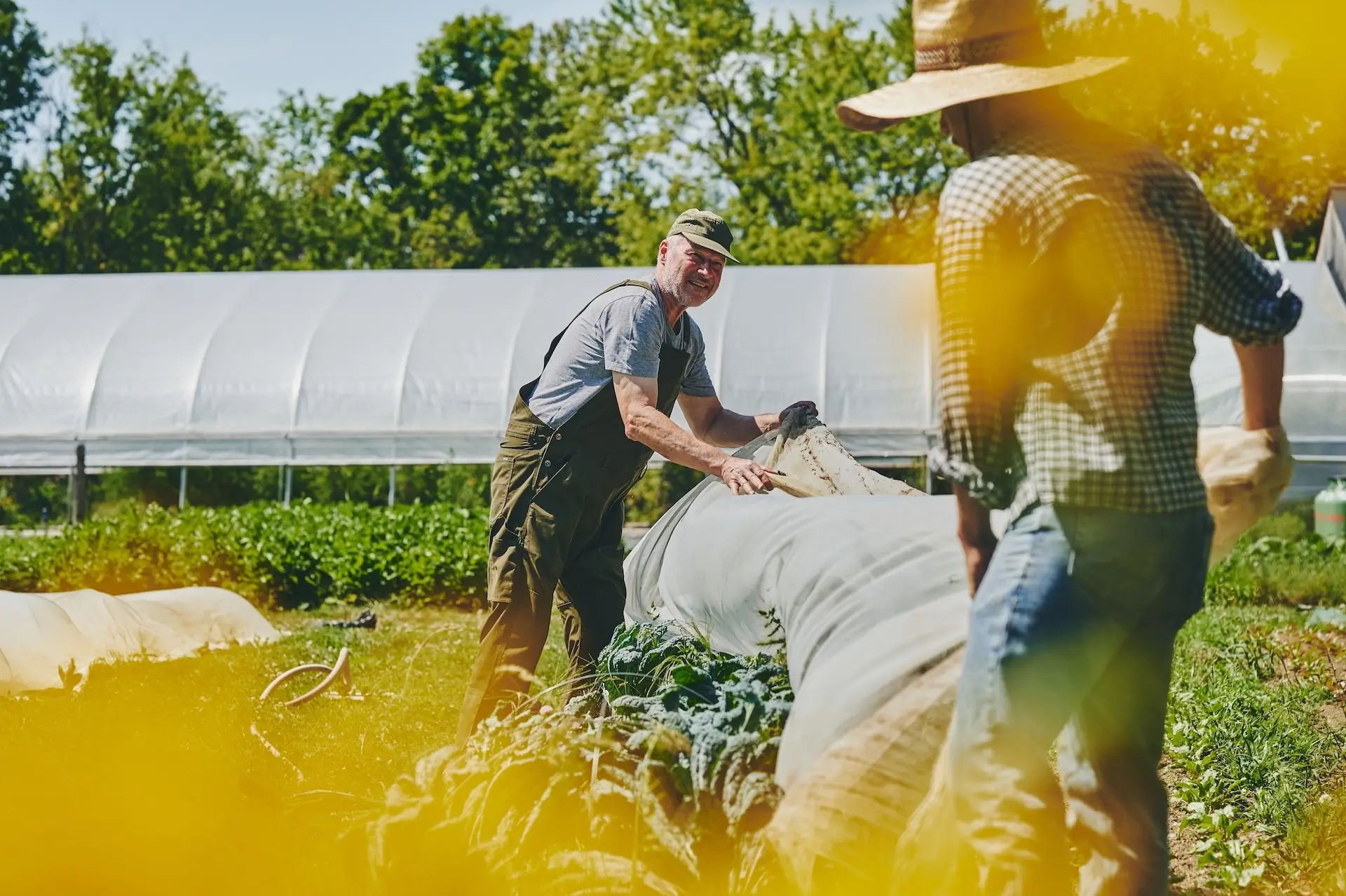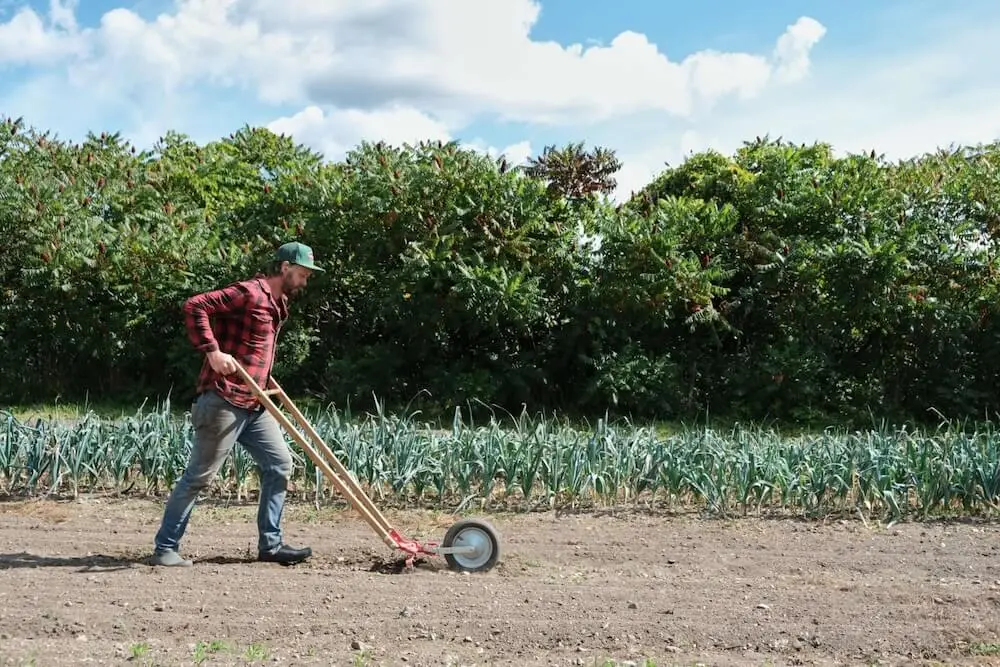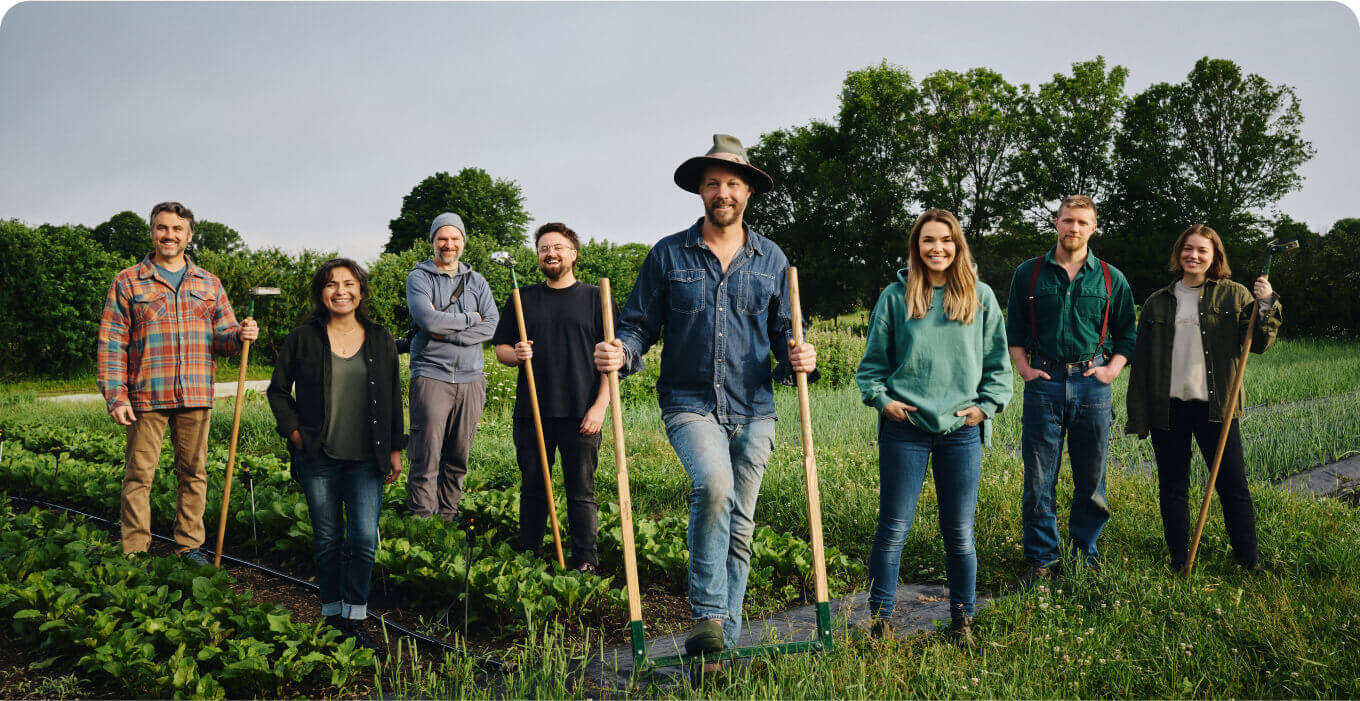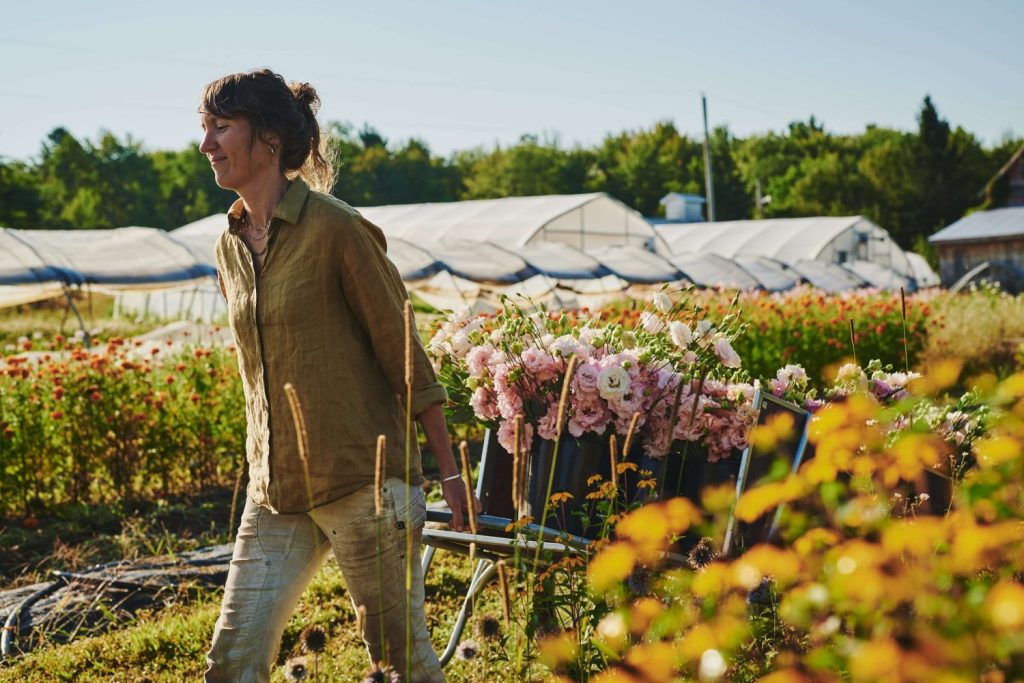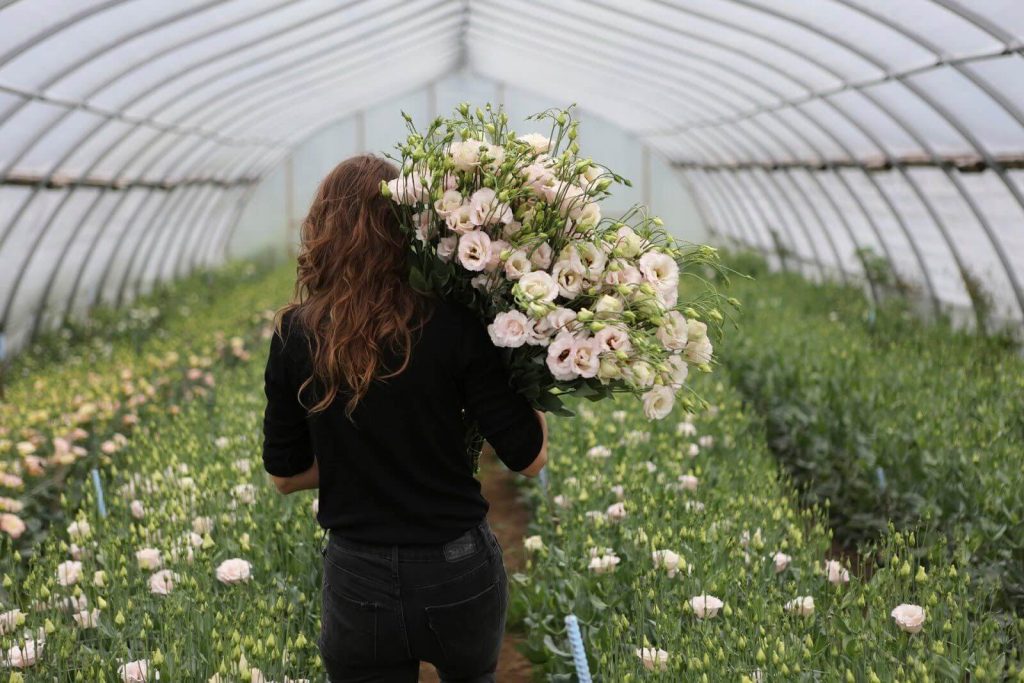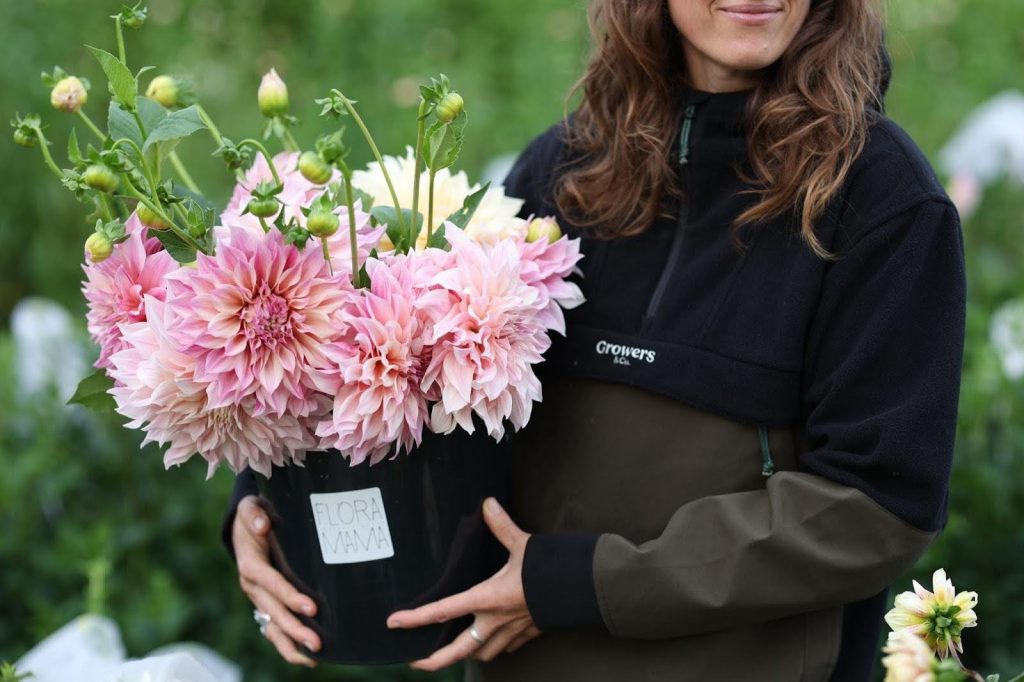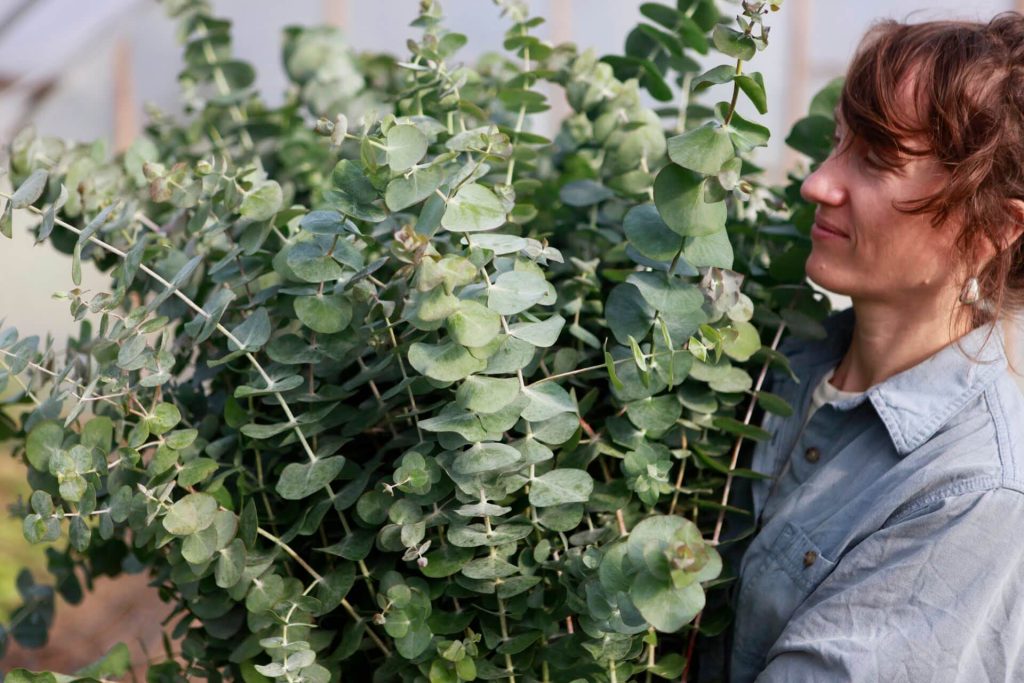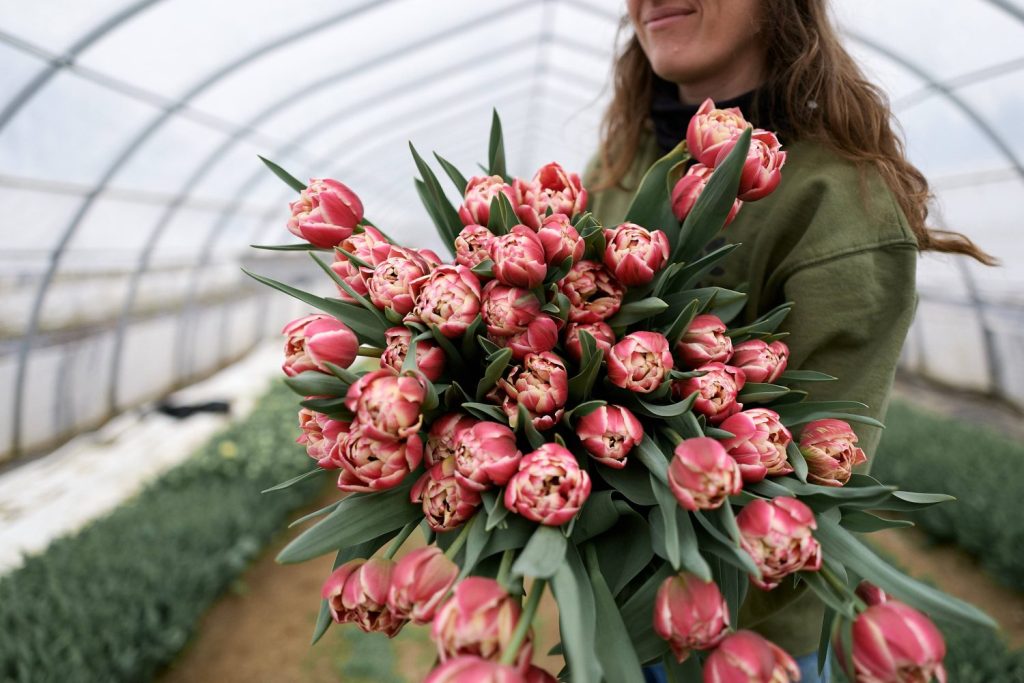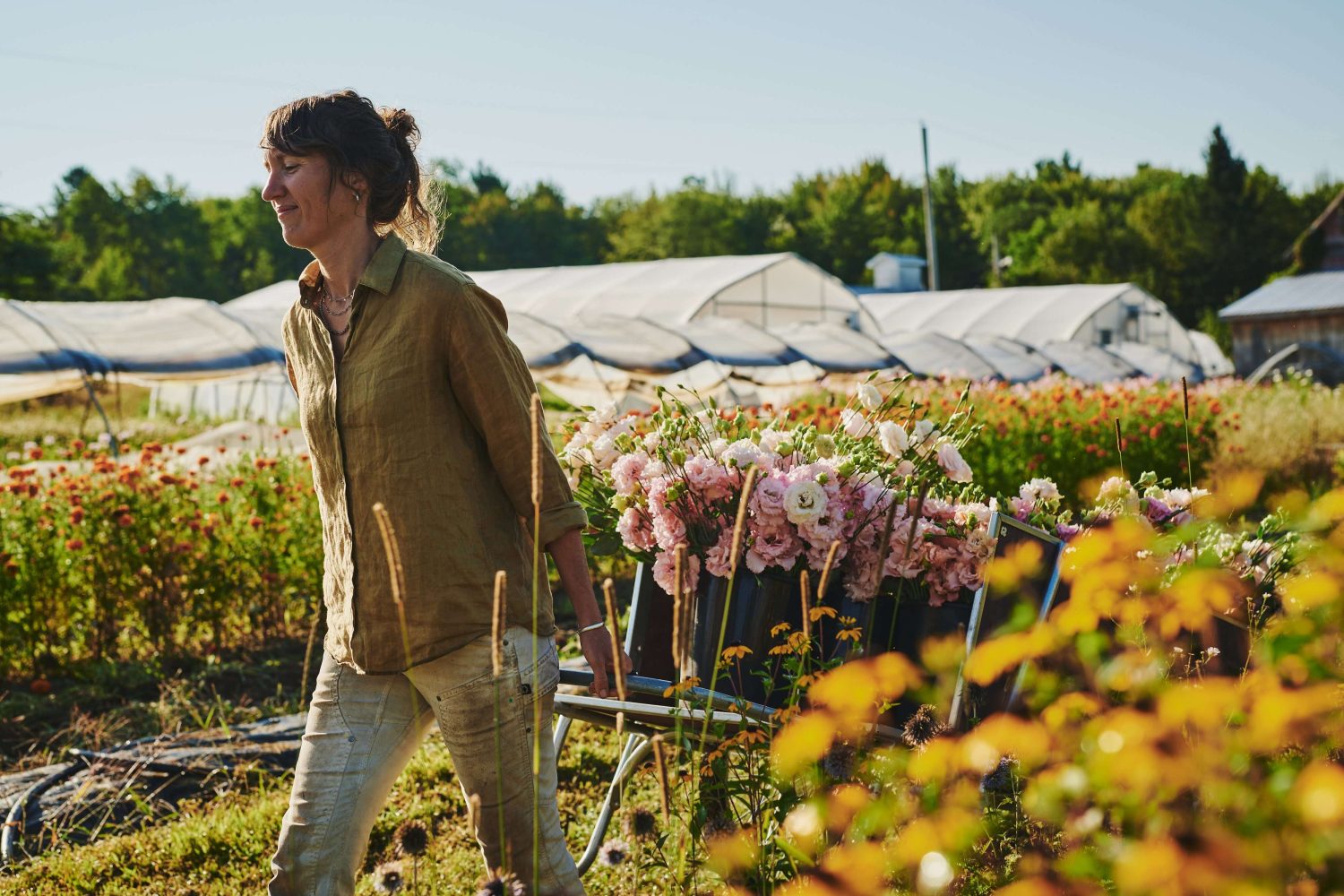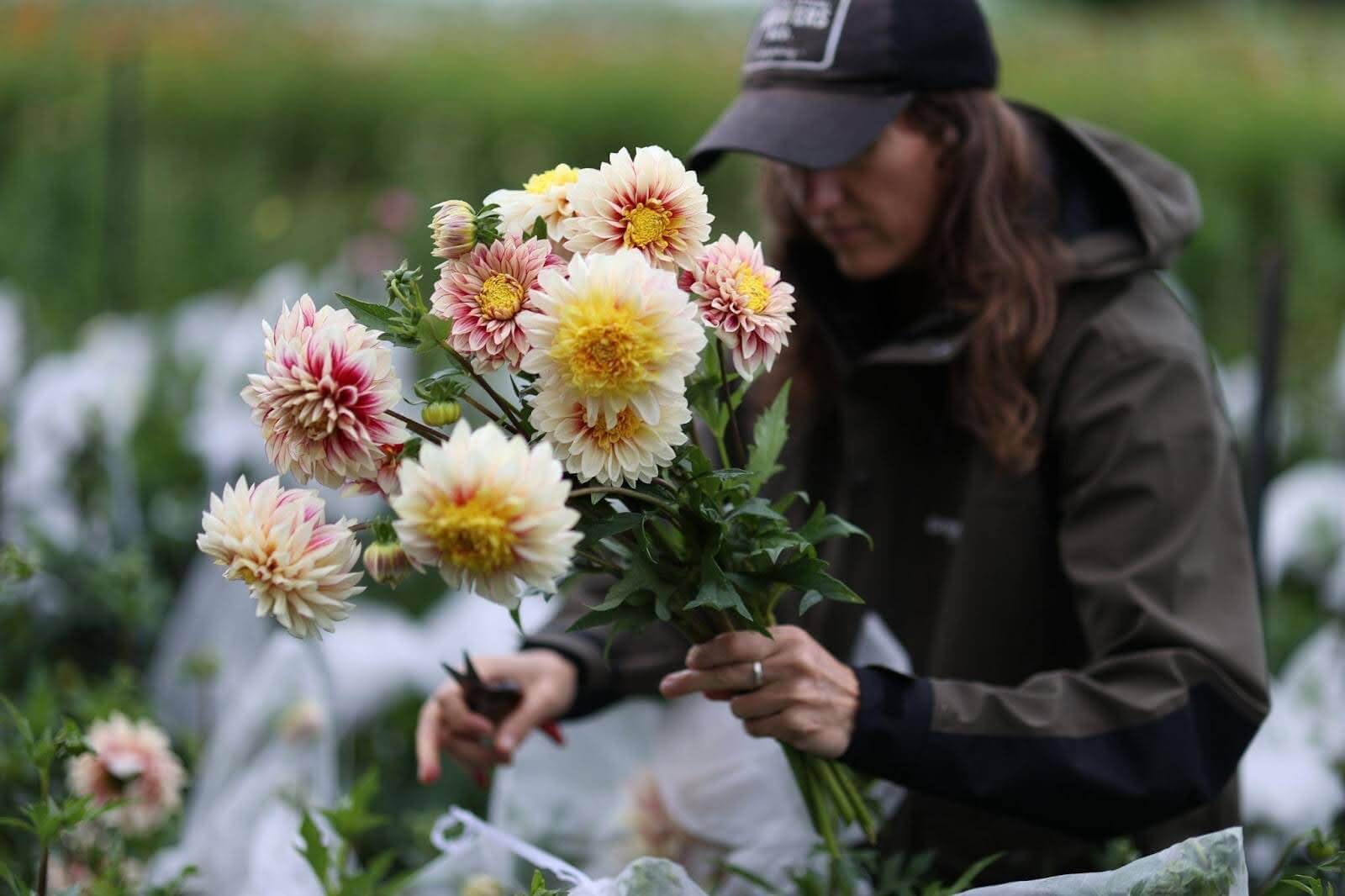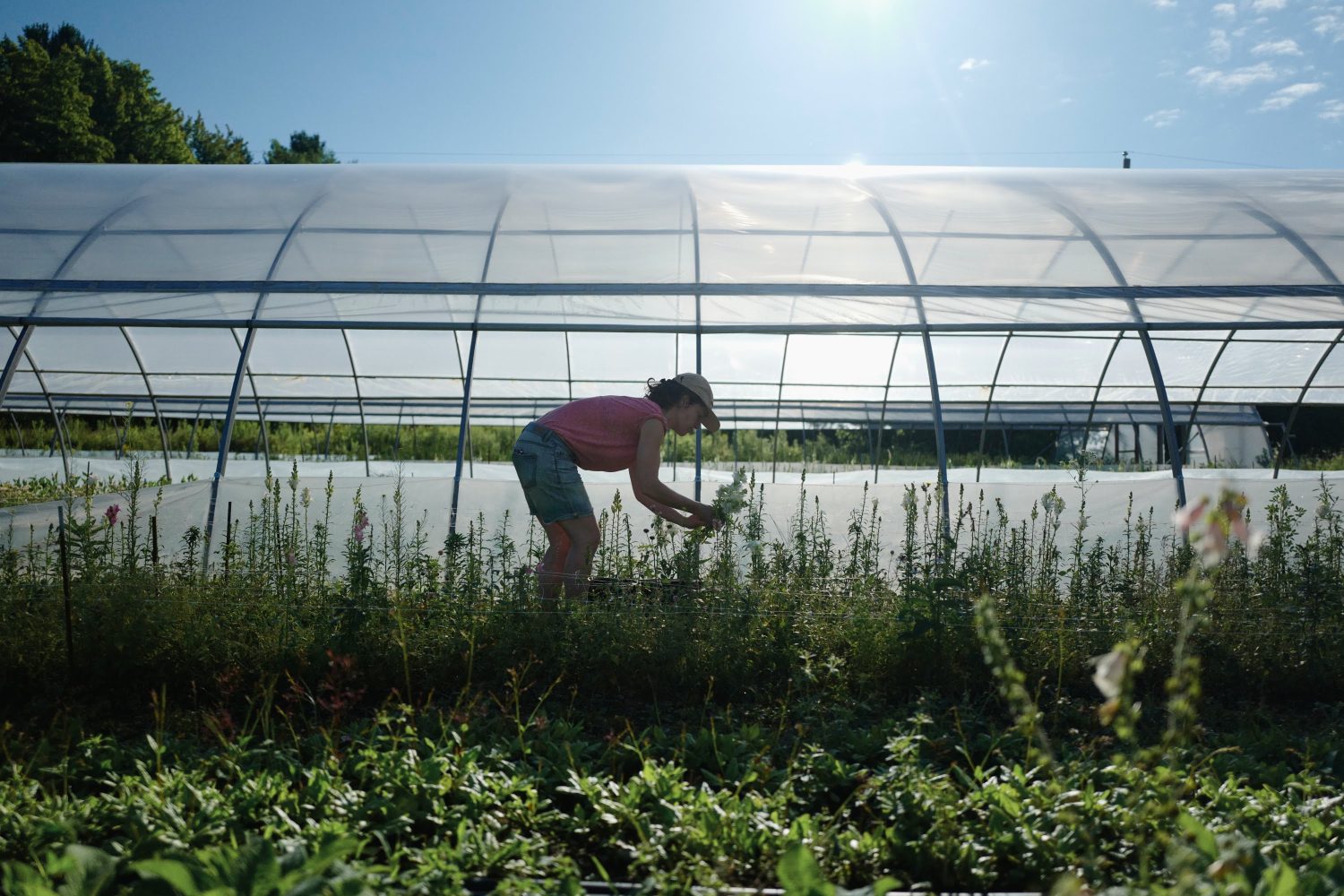The profitability of cultivating and selling flowers depends on various factors, including geographical location, climatic conditions, market demand, and production techniques. Although certain flowers enjoy universal popularity, the most profitable flowers to grow and sell can differ significantly depending on regional circumstances and specific business models. To complement this guide, I’ve also created a video that dives into the topic be sure to check it out below.
I hope this guide will help you comprehend the logic behind finding the most profitable flowers to cultivate by focusing on critical areas such as selection, cultivation, and sales strategies before going into details on our top 5 most profitable flowers at Floramama, and why.
1. Selection: Comprehending Flower Categories and Growth Cycles
Typically, flowers are divided into three primary categories for commercial purposes: focal, secondary, and foliage. Each category plays a unique role in floral arrangements and affects profitability in distinct ways. Even though there are more obvious ones than others, the categorisations of flowers into focal, secondary and foliage can vary from one grower to another, and it can even vary from one bouquet to another, in a season.
Focal Flowers
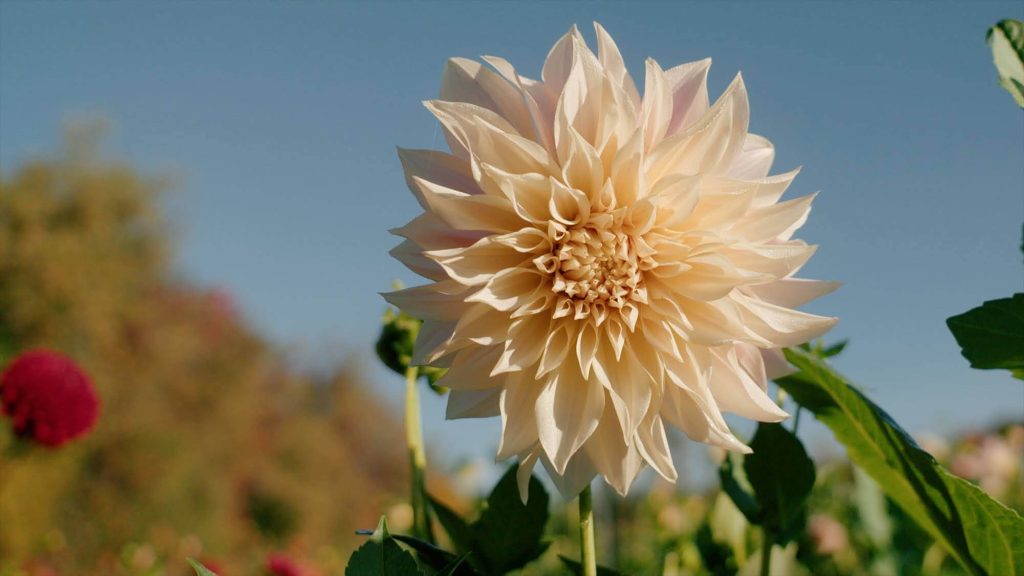
Focal flowers are the highlights of any bouquet, bringing higher prices due to their size, vibrancy, and popularity. They also play a huge role in the choice of the color palette and will usually be the reference in terms of color for the whole bouquet. Examples include peonies, dahlias, lisianthus, and specialty tulips. These blooms generally yield a single harvest per season; however, their premium pricing renders them a worthwhile investment. It is a very smart move to focus on focal flowers for the backbone of a flower farm’s production and bring diversity by growing different colors of the same focal flowers.
Focal flowers are among the most profitable flowers to grow and sell, as their high market value makes them a strategic choice for flower farmers. Also, many focal flowers already have a fair amount of leaves on them and by carefully selecting these particular varieties, the need to grow additional foliage can be significantly reduced.
Secondary Flowers
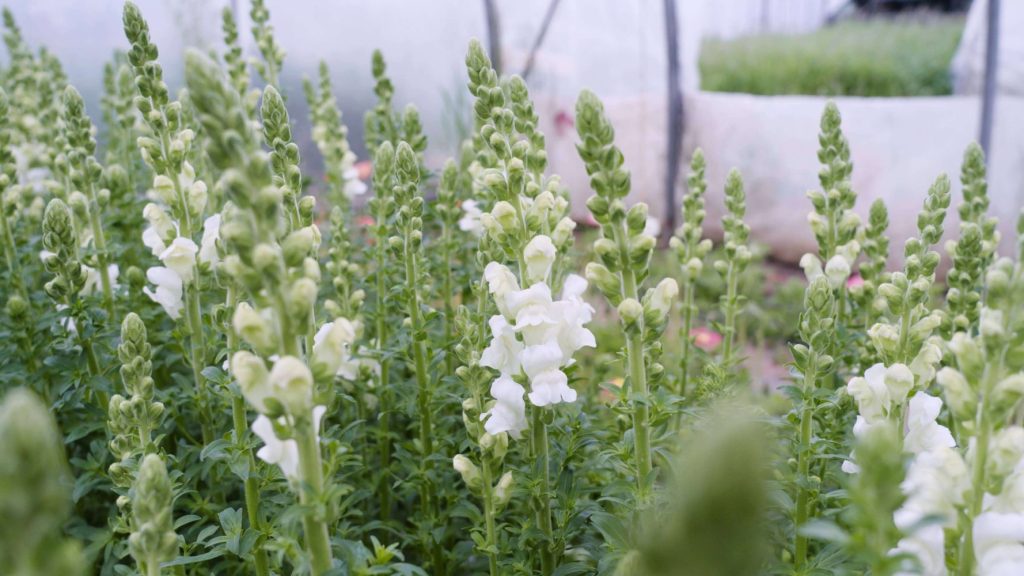
Secondary flowers are used to complement focal blooms, contributing to adding textures, volume and dimension to bouquets by filling gaps or negative space and creating depth and visual interest. They also are the vehicle for color transitioning inside your color palette and will usually be a brighter or darker version of your focal flower’s colors, or a complementary color that enhances an harmonious contrast.
Examples in this category include snapdragons, sweet pea vines, and cosmos. With typically shorter growth cycles, these flowers can be harvested multiple times within a season but can be very time-consuming to harvest for their worth. Choosing the most profitable flowers to cultivate in this category can help maximize returns while maintaining an efficient workflow!
Foliage
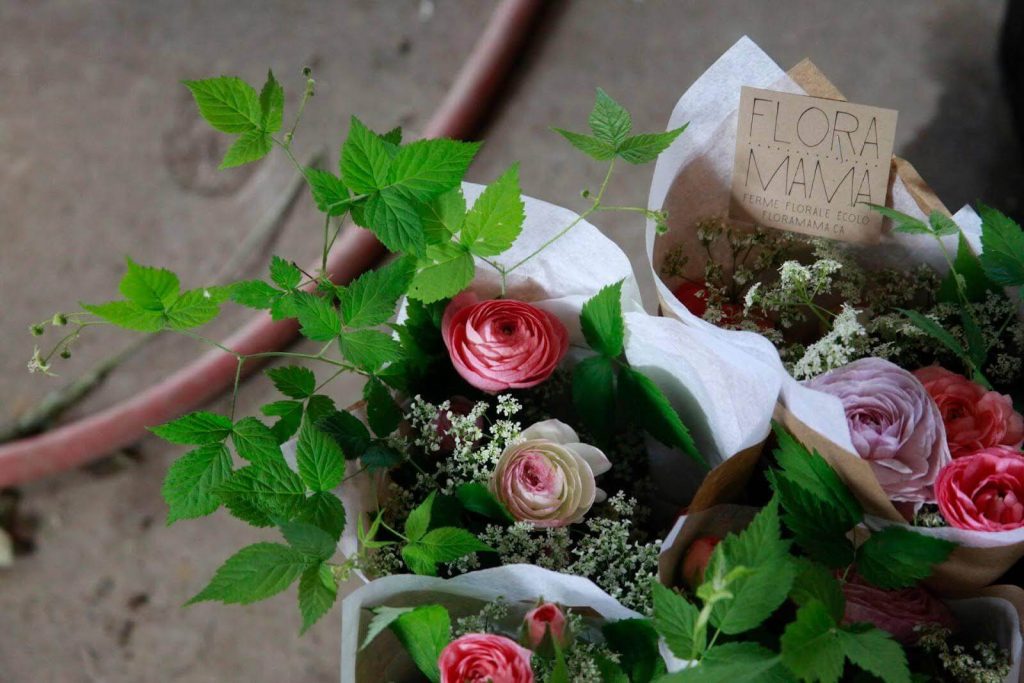
Foliage contributes texture, volume and structure to bouquets. Popular selections in this category include eucalyptus, mint, and raspberry greens.
If the focus is not put on growing focal flowers having a fair amount of leaves, growing a consistent supply of foliage is essential for creating beautiful bouquets throughout the entire season—from spring to the height of summer and into early fall.
Many also offer the added bonus of fragrance. Some, like culinary herbs, have a rich, enticing aroma, while others, such as bells of Ireland and eucalyptus provide a fresh, clean scent. Though often overlooked, foliage can be some of the best flowers to grow for profit, thanks to their essential role in floral arrangements and their continuous market demand.
Growth Cycles
Understanding annual, biennial, and perennial life cycles is critical for production optimization.
Annuals, like zinnias and sunflowers, are plants that finish their life cycle in one season. These are the best choices for early harvests, succession plantings and quick turnover.
Biennials, like foxgloves, will take two seasons to mature and will bloom in the second season only, but they can provide unique blooms. Many hybrid varieties (F1) of biennials will bloom in the first year though.
Perennials, like peonies and yarrow, will come back year after year, often increasing in yield and profitability after a few years to establish their root system. Unlike what you might think, perennials are not the most profitable flowers for quick turnover. Just like with vegetables, you want your production to grow, harvest and sell as fast as possible. For flower farming it’s the same logic, so annuals are the best choice for a small-scale diversified flower farm. More and more hybrid biannuals are available which makes them a great choice, nonetheless still choosing true biannuals for their specific beauty.
And finally, perennials bring true showstoppers to the game adding some of the most beautiful flowers there is. But they take space all year round and have to be taken care of all year round for a harvest that is typically short, between 10 to 14 days long. They also need between 2 to 4 years to establish before performing a big harvest on the plants which reduce significantly early income. However, selecting the the most profitable flowers to cultivate within this category can ensure long-term success despite the initial waiting period.
Harvest Types
Different flowers require tailored sales strategies based on their harvest type:
- Heavy bloomers are reliable workhorses in the garden, producing large quantities of flowers and foliage over an extended period. The more you harvest, the more the plants will continue to bloom. Due to their high productivity, fewer succession sowings are needed. Zinnias, Cosmos, Icelandic Poppies and sweet peas are all examples of plants in this category.
- Medium bloomers are highly productive, but their flowering window isn’t as long, which means they need to be replanted more frequently. Amaranth, Gomphrena, snapdragons and Queen Anne’s lace all fall into this category.
- Single bloomers are a one-time thing producing just one flower per stem before they are done. While they may not provide an ongoing flush of blooms, they often make up for it with their striking beauty, unique forms, or long vase life. Examples of single bloomers include sunflowers, lilies, and tulips.
2. Growing: Experience, Efficiency, and Investments
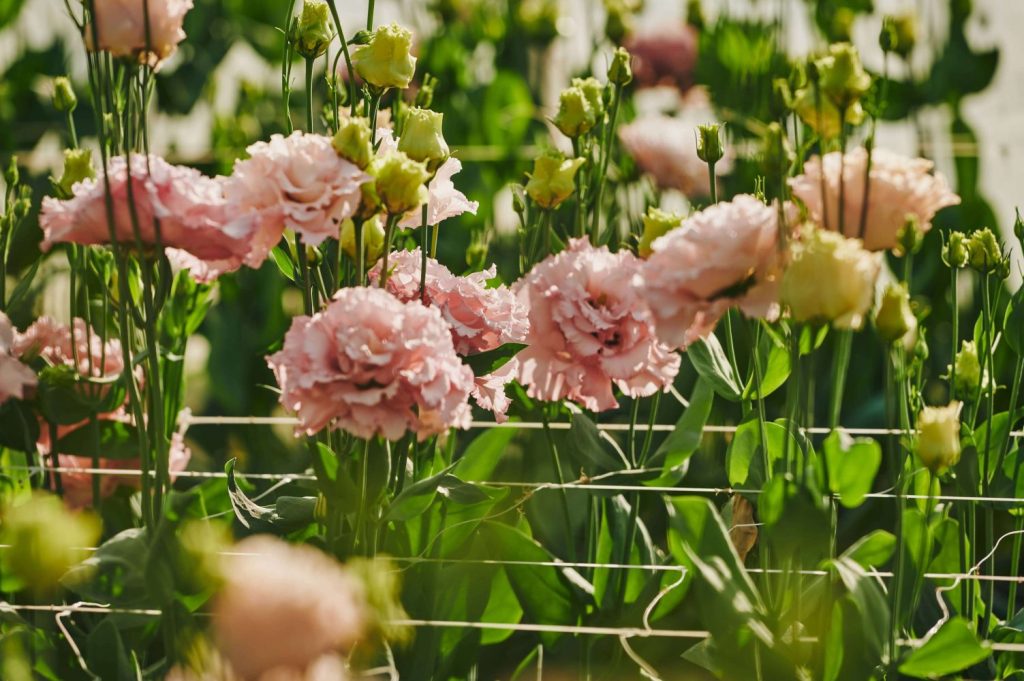
The success of a flower farm is built on experience, efficient techniques, and strategic investments. Small-scale, bio-intensive farming methods that focus on the most profitable flowers to grow and sell can yield high returns while minimizing waste and maximizing productivity.
The Value of Experience
Flower farm success depends a lot on the grower’s experience, so start small! Books and programs play a huge role, but efficiency often comes from field experience, trial and error, and exchange with the farming community. It is through practical learning that you can develop improved practices, identify which flowers perform best in your own specific climate, and acquire more effective harvesting procedures while maintaining quality at the very highest levels.
Ongoing learning accelerates your ability to innovate and adapt. Through keeping up with new techniques of farming, market trends, and consumer preferences, growers get better and better at what they do.
Small-Scale Bio-Intensive Farming
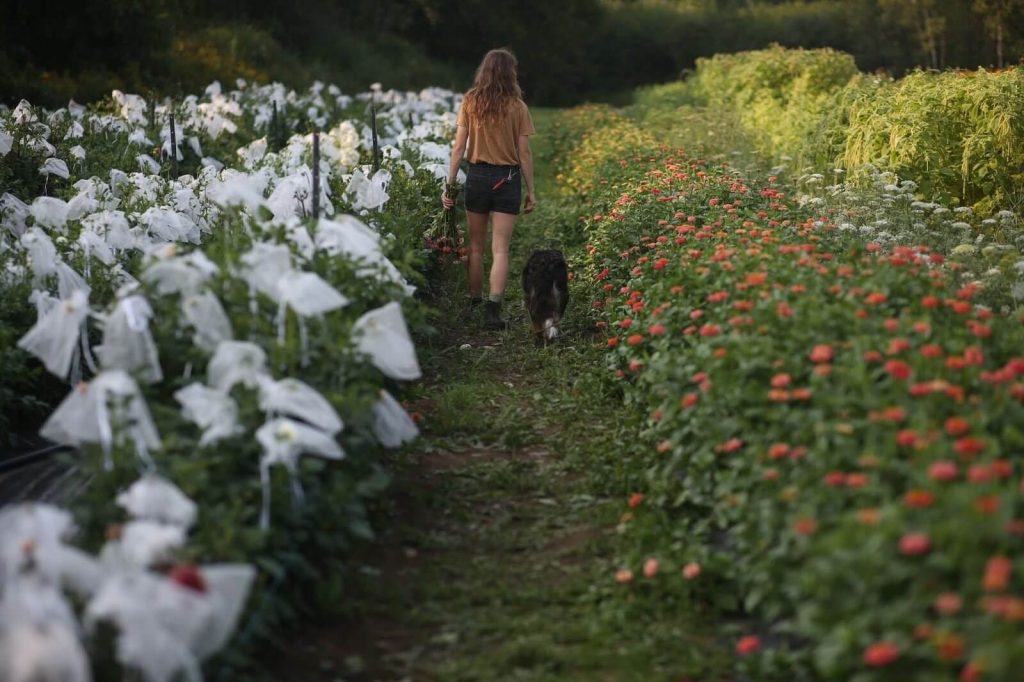
Bio-intensive methods focus on maximizing production in a limited space by using techniques such as:
- High-density planting: Maximizing yields per square foot is critical to a flower farm, but so is offering the optimum growing conditions. Overcrowding, in fact, is counter-productive, limiting airflow and nutrient availability, which slows flower development. Finding just the right balance between plant density and spacing is essential, and precise spacing charts are powerful tools. When properly done, high-density planting not only boosts productivity but also helps to create a quick canopy that helps suppress weeds and seals in soil moisture, leading to healthier and hardier blooms.
- Crop rotation, cover crops, compost: investing money in enriching the soil and its biology is the secret to building soil health and avoiding disease and pests as well as increasing growth. Continuously adding organic matter, planting cover crops that protect and fertilize the soil, and rotating crops intelligently, we build a balanced habitat where microorganisms can thrive. Cover crops function to keep the soil covered, fix nitrogen, and prevent erosion. This not only boosts levels of nutrients and plant resistance but also improves soil structure in the long run. Healthier soil means higher yields and improved blooms, affecting the farm’s profitability by maximizing output at low input cost.
These sustainable methods reduce costs associated with material inputs and create a healthier growing environment.
Financial Investments
Starting a flower farm requires a heavy investment upfront, but by starting small, planning and wise financial decisions, it will pay off after a few years. Infrastructure is one of the biggest expenses you’ll have to make. Greenhouses, for instance, create longer growing seasons, allowing you to plant early in the spring and pick late in the fall. This not only grows your harvests but also helps to get long stems and quality blooms. Irrigation systems are likewise a major investment. While they are costly up front, they give your crops consistent, effective watering, which is key to healthy development.
Lastly, tools like a BCS, delivery truck, and weeding supply will also be a big part of the bill. But by investing in quality infrastructure, tools and sustainable practices right from the start, you create a solid foundation that not only optimizes growth but also guarantees your farm’s long-term profitability. Offsetting these up-front costs with a clearly outlined growth plan, such as choosing high-demand flower types and maintaining steady channels of sales, will mean that you will be able to return on investment in a short number of seasons.
Having the right small tools can have just as big an impact on your farm’s efficiency and profitability! From precision seeders to harvest knives, we’ve compiled a list of essential tools every grower should have to streamline daily tasks, reduce labor, and boost productivity.
Check out our blog article: 30+ Must-Have Small Farm Equipment and Tools to build a well-equipped and efficient flower farm.
Prefer to see these tools in action? Watch our YouTube video for a hands-on demonstration!
3. Most Profitable Flowers & Market Understanding for Higher Profit
A successful flower business goes beyond growing—it requires strategic sales and marketing efforts to get to know and reach the right customers. The best sales strategies depend on understanding the market, choosing profitable distribution channels, and maintaining consistent quality.
Market Demand, Trends and Personnel Preferences
The most profitable cut flowers aren’t just about numbers—they’re about understanding what people want and what works best in your specific region. Local trends, climate, and customer preferences all play a huge role, which is why market research is key. Talking to florists, wedding designers, grocery stores, and everyday buyers helps reveal which colors, shapes, and varieties are in the highest demand. Seasonal shifts also matter—a flower that’s perfect for spring weddings might not be as popular in the fall when richer, moodier tones take center stage. To maximize success, staying ahead of market preferences and adjusting your production strategy is essential when focusing on the most profitable flowers to cultivate.
That said, profitability isn’t just about what sells—it’s also about what you love to grow. If you don’t enjoy planting, harvesting, or selling a particular flower, chances are you won’t give it the same care and attention as one you’re truly passionate about. Choosing flowers that excite and inspire you will not only make the work more fulfilling but will also result in healthier, more beautiful blooms that customers will naturally be drawn to.
Beyond personal and market preferences, other factors like vase life, production costs, and ease of cultivation play a big role in profitability. Flowers with a long shelf life are more appealing to florists and customers. Likewise, crops that are easy to grow, whether because they bloom continuously, yield abundantly, or resist pests, help keep costs down and efficiency up.
At the end of the day, successful flower farming is about striking the right balance. Paying attention to trends, taking notes, and staying flexible will help you make smart choices, but it’s your passion for what you grow that truly makes the difference. When you find that sweet spot where personal joy meets market demand, you’re not just running a profitable business; you’re building something meaningful, season after season. And if you’re curious about how to apply this same mindset to vegetable production, we’ve created a detailed guide to help you identify and grow the most profitable crop for small farms, based on real-world performance data and years of field-tested insights.
Pricing: Maintaining Value and Profitability

Pricing flowers is just as important as growing them well. If your prices are too low, you risk undervaluing your hard work, struggling to cover costs and doing harm to a market already in place. On the other hand, pricing too high without a solid reason can turn customers away. The sweet spot lies in setting prices that reflect the true value of your flowers while staying in line with what other local growers and florists are charging. Reach out to them or find a local cut flower association that will provide you with a precise list to begin with.
High-quality, locally grown flowers deserve premium pricing, especially when compared to mass-produced imports. Florists, wedding designers, and direct customers often appreciate the freshness, sustainability, and unique varieties that small-scale growers can offer, and they’re willing to pay for it if quality is there. This is particularly true for the most profitable flowers to grow and sell, as high-demand varieties can command better prices when grown with care and expertise.
Consistency and transparency in pricing build trust. When customers understand why your flowers cost what they do, whether it’s because they’re organically grown, rare varieties, or simply fresher and longer-lasting, they’re more likely to see the value and invest in them. Production costs, seasonality, and exclusivity all play a role in pricing, and limited or specialty blooms can naturally command higher prices.
At the end of the day, pricing isn’t just about making sales, it’s about respecting the time, effort, and passion that go into every stem you grow. By confidently valuing your flowers and staying in tune with market rates, you not only build a sustainable business but also help reinforce the worth of locally grown flowers in your community.
4. Sales Channels: Expanding Opportunities for Profit
Running a successful flower farm goes beyond just growing beautiful blooms—it’s about getting those flowers into the hands of the right people. Selling through multiple channels not only increases your chances of profitability but also minimizes the risk of putting the farm financially at risk if all your eggs are in the same basket.
Farmers’ Markets: Building Personal Connections and Educate
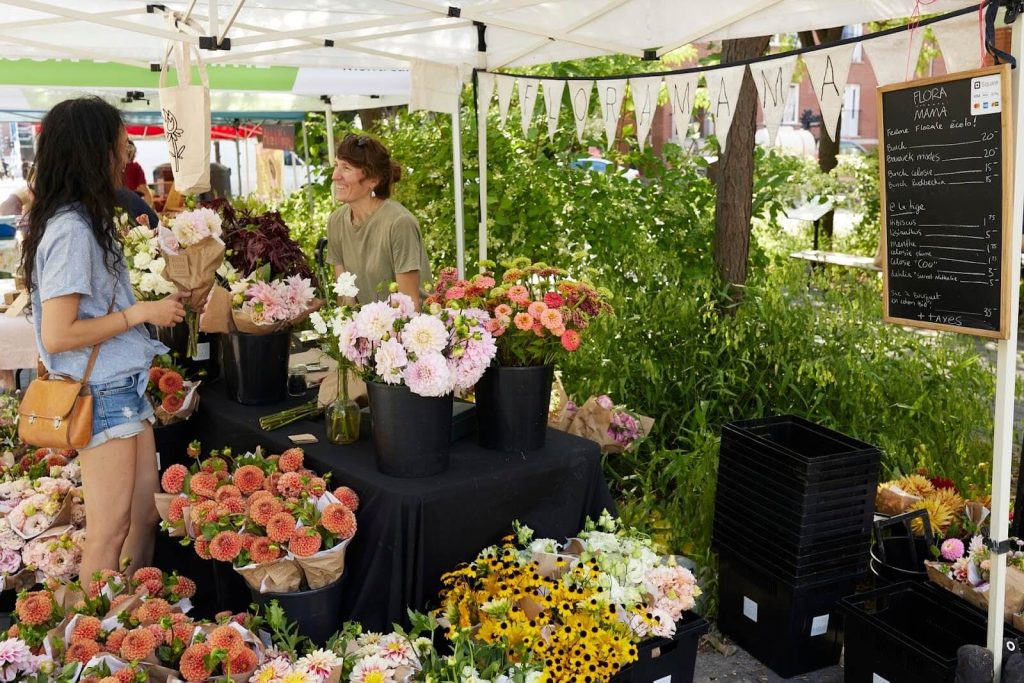
Farmers’ markets are one of the best ways to connect directly with customers, and they offer a great opportunity to sell your flowers at a premium price. When people come to these markets, they’re often looking for something special, and being able to tell them the story of your farm can make all the difference. Customers love knowing where their flowers come from, how they were grown, and who’s behind them. This personal connection helps build loyalty and often means they’re willing to pay more for what you offer.
I highly suggest you make all the bouquets in advance and do not start to compose complex bouquets for customers on-site. Sales have to be fast. You can prepare mixed bouquets and/or straight bunches and bring a small amount (1 bucket) of bulk stems for people who would only like a stem or two.
Farmer’s markets are also the best place to educate people on the particularities of the varieties you grow and how to take care of their flowers and benefit the most from them.
Florists and Wedding Designers: Coping with the Unstable Nature of Bulk Sales
Sales to florists, wedding designers, and event planners can be an excellent source of increased sales, but there are some special challenges involved. These buyers don’t always know precisely what they’ll need from week to week. Their orders can fluctuate according to client preference, time of year, and what events are pending, so it’s hard to anticipate what will be needed.
The best way of handling this is through proactive communication. Speak to your flower buyers and find out what colors they like and what types of flowers they foresee themselves needing. This will allow you to harvest more efficiently and ensure you’re growing the most profitable flowers for their needs.
To increase your chances of meeting demand, consider growing some classics, like blush and white blooms, as well as a variety of unusual and funky greenery and foliage. These are the kinds of flowers that wedding and event professionals tend to rely on, and you’ll find they’re often a safe bet to have in your inventory.
Wedding and event flowers are especially unique because they’re often chosen based on their immediate beauty, not their longevity. Such flowers often need to be in full, open bloom upon delivery, as they only need to stay fresh a day or two as the focus is on their looks rather than their duration.
While wholesale orders from florists and event planners may not be as predictable as direct-to-consumer sales, they still are very profitable when managed well.
Subscription Services: A Steady Stream of Income
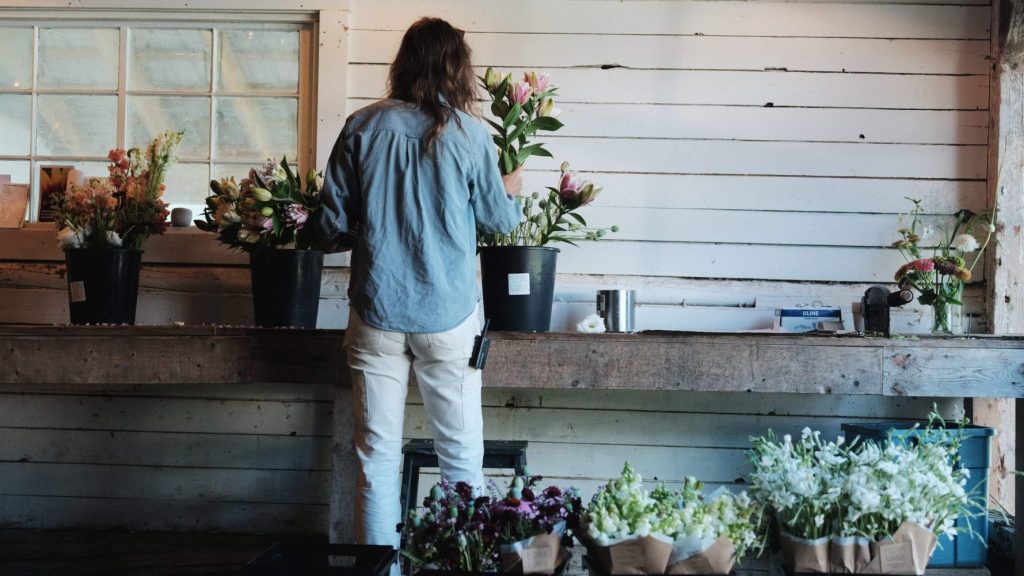
Much like CSA baskets for market gardening, flower subscriptions are an excellent way to ensure a reliable revenue stream while growing the most profitable flowers for long-term sales. It’s also a great way of maintaining consistent cash flow, particularly in the off-season providing the financial buffer required to start the season such as compost and seeds.
By delivering bi-weekly bouquets to chosen drop-off points, you align your brand with values such as environmental sustainability, local produce, and a laid-back, community-driven vibe. This generates not only a regular stream of income but also enriching relationships with customers. You’re not selling flowers under this system, you’re making friends and providing an intimate, memorable service.
Subscribers also have a choice among several different packages; spring, autumn, or for the whole season. To make it easy and simplify on pick-up day, there’s one size and one model of bouquet available per delivery. This prevents any mistakes made as customers go in to collect their flowers.
With subscription, however, comes responsibility. When people subscribe, they’re counting on you to have beautiful, fresh flowers in their hands on time, each and every time. You need to know your growing process, and proactively plan so that you have enough flowers to meet orders without compromising quality. This means selecting the most profitable flowers to grow and sell, and balancing customer favorites with unique, lesser-known varieties to surprise and delight subscribers.
Since they don’t choose the varieties, you are also able to expose your customers to types of flowers that they might not have otherwise chosen. Mixing the unusual or lesser-known types of flowers with their classic favorites, you can increase their flower experiences and provide a sense of surprise and wonder.
Floramama’s top 5 most profitable flowers to grow and sell
Here are the stars of our fields. The flowers that made the cut since day one at the farm and that customers can never get enough. We enjoy growing, harvesting, arranging and selling them. They are a great pride and highly satisfying. I added the price per stem that we get here, at Floramama, selling them directly to customers (no intermediates), * but keep in mind that these prices are subject to change in different areas, markets, and realities.
-
Lisianthus:

Even though they are the longest crop on the farm (5 months), they remain an absolute favorite to us, and the customers. They can be tricky to start from seeds if you don’t have the right methodology, but with good techniques, they’re absolutely fine to manage and even, super satisfactory to grow! With all the care and effort put into their germination conditions, it is obvious that they deserve a protected growing space such as a caterpillar tunnel or unheated greenhouse. They’ll benefit from it by growing long, strong stems often reaching 3 feet and by the number and quality of the blooms. Some varieties often carry up to 10 flowers and more on a plant. Our favorite varieties are: Corelli™ Light Pink, Voyage Pink, Voyage Lavender, Voyage Light Apricot, Rosanne 2 Terracotta, Rosanne 3 Brown. 5$/stem
-
Dahlias:

Although they can be very time-consuming all through the year and they only last around 3 to 5 days in a vase, we still consider dahlias as a great flower to grow for profit because we sell a ton of stunning blooms. We have educated our customers to enjoy those magnificent flowers when they’re in season like they were a fireworks show. It doesn’t last long but you would miss it and it’s a feast for the eyes.
Another great thing with dahlias is you buy a few tubers and plant them, and by the end of the season they will have multiplied and you can divide them and replant all the new tubers next spring (they can’t survive freezing temperatures). It’s exponential and after a few seasons, you find yourself crawling under tubers. They also are super heavy bloomers extending harvest from mid-August until the first frost. Our favorite varieties are; Cornel Bronze, Cafe Au Lait, Ice Cube, Brown Sugar, Linda’s Baby, Platinum Blonde, Caro, Sweet Nathalie, Wizard of Oz, Nathalie G, Pink Pearl, Golden Scepter, Maarn, Petra’s Wedding, Polka, Terracotta. 5-7$/stem
-
Eucalyptus:

It’s a classic and doesn’t require a lot of care during the season. They like hot and dry conditions so highly recommend growing it under controlled conditions such as a caterpillar tunnel or unheated greenhouse. We can never grow enough and get a really good price per stem. Favorite varieties; Baby Blue, Silver Plate. 4$/stem
-
Specialty tulips:

Even if they are treated as annual (we buy new bulbs every year) specialty tulips are the very first to bloom on the farm, bringing incomes early in the season. People are eager to get their hands on fresh living things after winter so they sell super fast. They also preserve super well in the cold room going up to 3 weeks, but not more. Favorite varieties; Columbus, Copper Image, Belle Epoque, Exotic Emperor, Queensland, Cameo, Apricot Parrot, Sensual Touch, Dream Touch, Drumline, Elsenburg, Greenstar, Northcap, Pink Star, Pretty Love, Wyndham. 3$/stem -
Peonies:

What is not to love about peonies? They can be expensive to buy (plants, not seeds) and also require 3 years of implantation to grow their root system and be able to fully bloom at maximum capacity so little to no income for the first 3 years. But after that, you’ll be rewarded with loads of perfect stems that every customer, direct or professional will want. Peonies are among the most profitable flowers to cultivate here at the farm. They store for up to 2 weeks in the cold room. 6$/stem

Plan Your Most Profitable Flower Season with This Free Cheat Sheet!
Our free cheat sheet gives you the average yield per plant for over 70 profitable cut flower varieties, so you can make informed decisions and grow with confiden
Ready to Take Your Skills to the Next Level?
Growing flowers is both an art and a science, and having the right knowledge and techniques can make all the difference in your farm’s success. Our comprehensive online course, The Flower Farm, will give you the exact methodology, tools, and strategies you need to succeed!
What you’ll gain from The Flower Farm course:
- Learn tried and tested techniques for efficiently growing a wide variety of cut flowers.
- Achieve higher yields and more consistent quality with the most popular flowers.
- Increase your sales all season long with this popular complementary product.
- Develop a loyal customer base through a variety of sales strategies.
Whether you want to start a flower farm from scratch or scale up an existing operation, this course provides step-by-step written and video instructions to help you grow efficiently and profitably.


